When Campbell Maclaurin proposed the programme that became the Goodfellow Unit to Douglas Goodfellow in 1977, he did not intend to offer formal qualifications but rather focused on providing continuing medical education for GPs. By the early-1990s, however, attendees became interested in learning more about specific areas of general practice and gaining a formal qualification to attest to their skills.1
The existing ‘cross fertilisation and good professional relationship’ between staff in the Goodfellow Unit and in the Department of General Practice perhaps aided the development of these courses.2 Staff from the Goodfellow Unit and the Department of General Practice were located on the same floor at the University of Auckland’s Grafton Campus. They often shared offices, contributed to one another’s meetings, and assisted on one another’s selection panels for new appointments. Phil Barham also contributed to the undergraduate teaching programmes in General Practice at no additional cost to the University of Auckland.3 Campbell Maclaurin and Phil Barham cited this ‘close de facto relationship … with regular twice weekly meetings and input into the planning of the various activities of that department’ as a main reason for transferring Goodfellow Unit from the Department of Postgraduate Affairs to the newly formed Department of General Practice in 1987.4
The importance of this relationship is perhaps most clear through the administration of postgraduate diplomas. In 1993, staff at the Goodfellow Unit established a year-long course in sports medicine, which involved a combination of evening lectures and clinical sessions from February to November, a series of half-day attachments, and a written and practical assessment. They also began a course on community emergency medicine, with weekly evening courses, and established a course on geriatric medicine shortly afterward.5 Although the Goodfellow Unit could not award postgraduate qualifications – instead, students received their qualifications from the Department of General Practice – the Unit organised most of the teaching of these courses on behalf of the University of Auckland.6
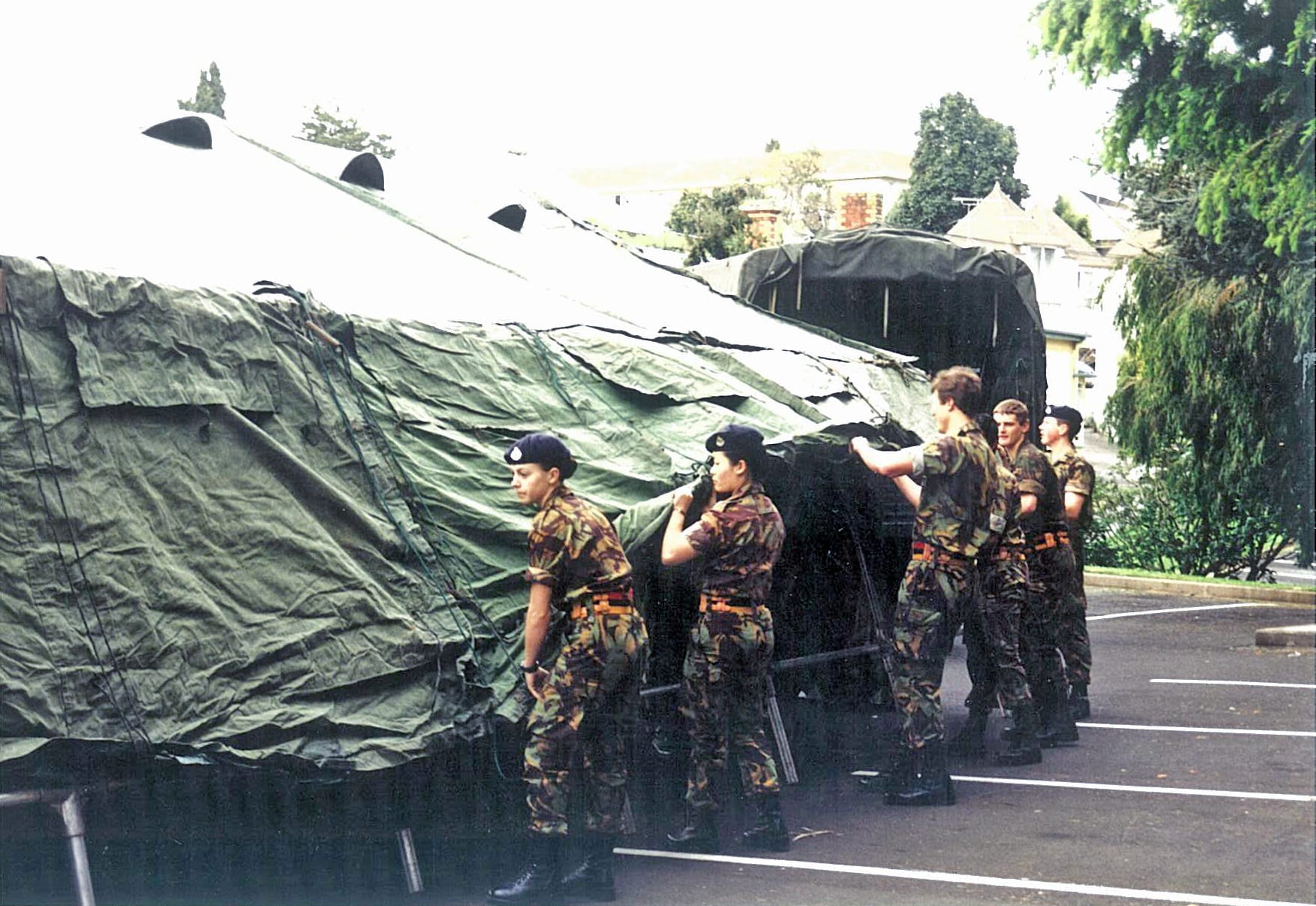

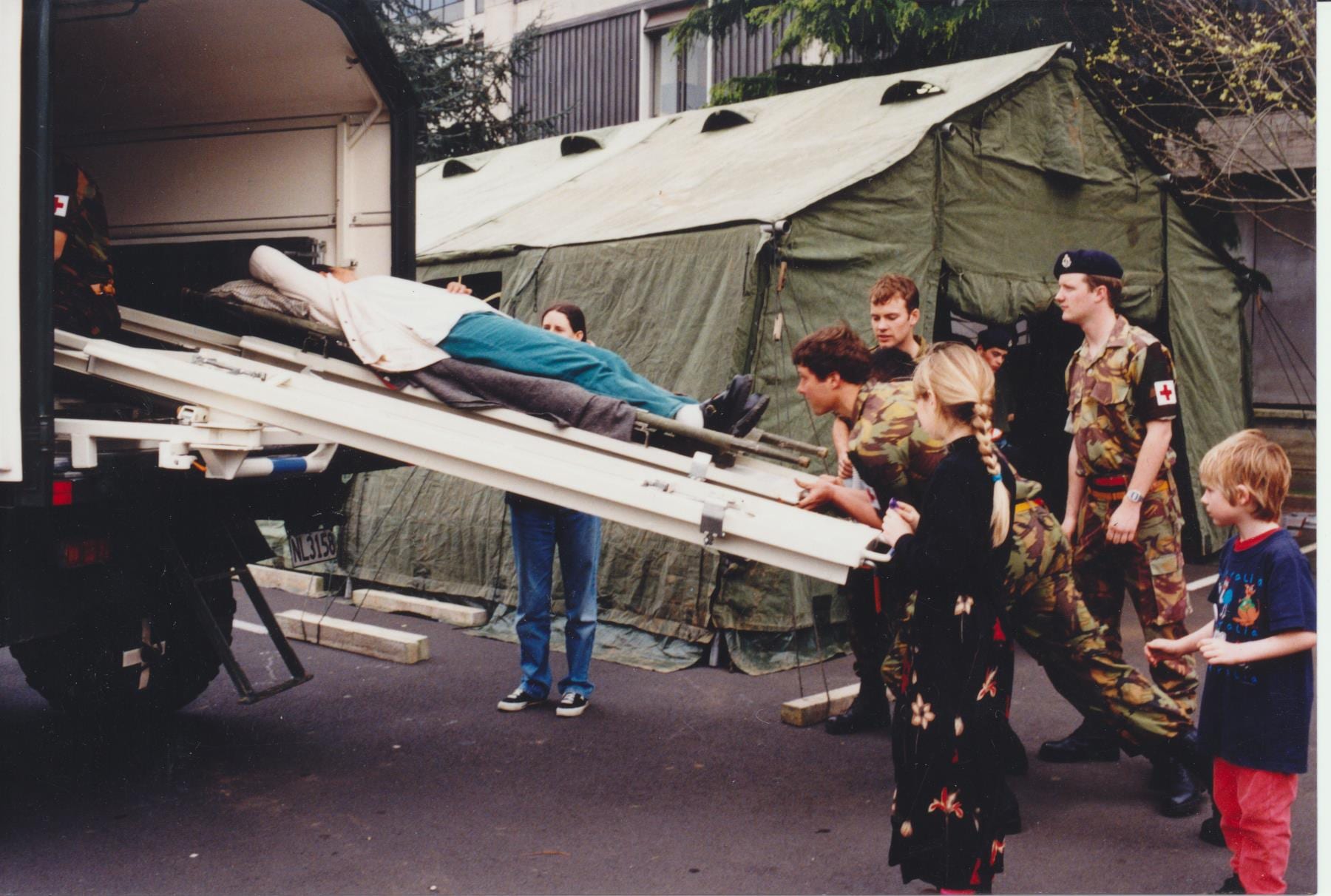
The Goodfellow Unit promoted their courses during the University of Auckland’s first Open Day on 14 and 15 September, 1996. They arranged the display in partnership with the 1st Field Ambulance Army Medical Corps, comprised of fourth and fifth year medical students.
The Unit’s decision to launch the courses reflected broader cultural changes. The former Assistant Director Jocelyn Tracey explained they established the Diploma of Community Emergency Medicine in response to the ‘call from GPs’ who needed more specialist training with the rise of emergency medicine clinics. Along similar lines, they decided to establish the Diploma in Sports Medicine in response to the ‘increasing emphasis on sports medicine in general practice but unless GPs went overseas there was no training available. So that’s why we set up a diploma’.7
The Goodfellow Unit not only responded to GPs educational needs regarding the content of the courses and formal recognition but also sought to make these courses accessible to GPs around the country by offering distance education. As noted earlier, distance learning had been an important feature of the Goodfellow Unit since 1979 when GPs could request interactive videos and audio cassettes through the Philson Library at the University of Auckland’s School of Medicine.
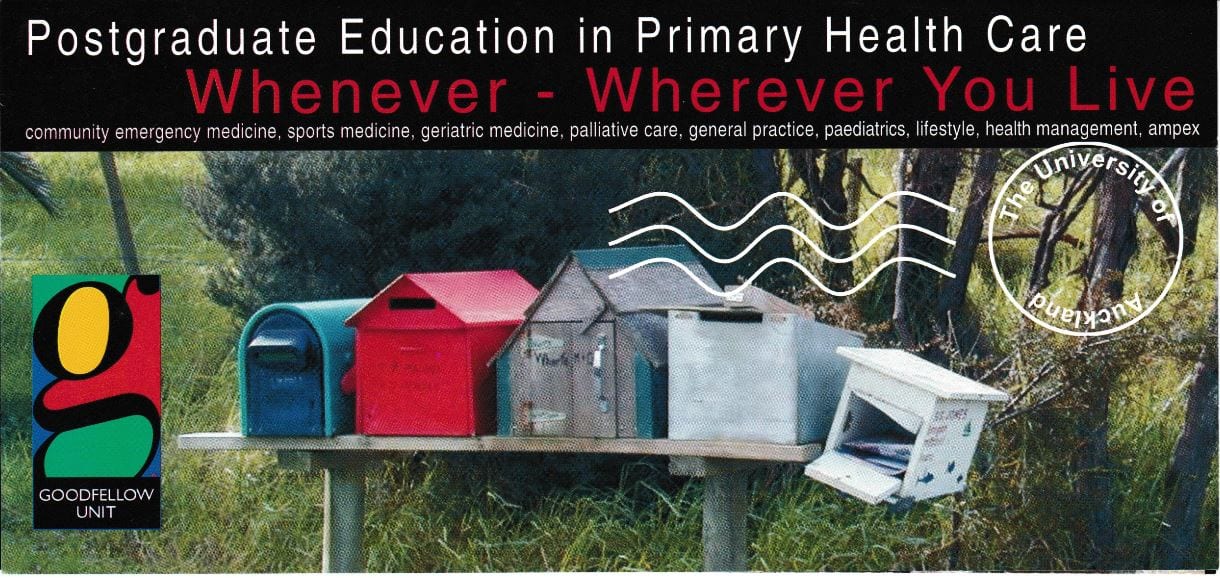
Promotional pamphlet for distance education. Photo taken by Dennis Kerins at Mangawhai Heads.
In the 1990s, GPs reported travelling over two hours each week to attend the thirty two-hour seminars required to complete their diplomas. Consequently, the Goodfellow Unit offered diploma papers in community emergency medicine, sports medicine, and geriatric medicine by distance for the first time in 1995.8
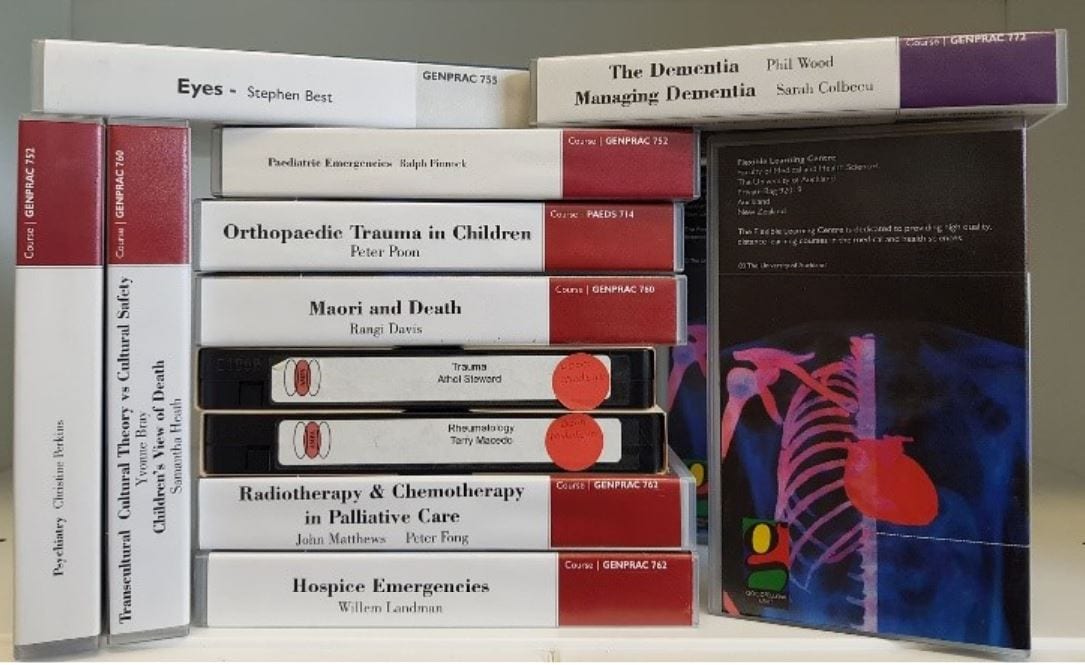
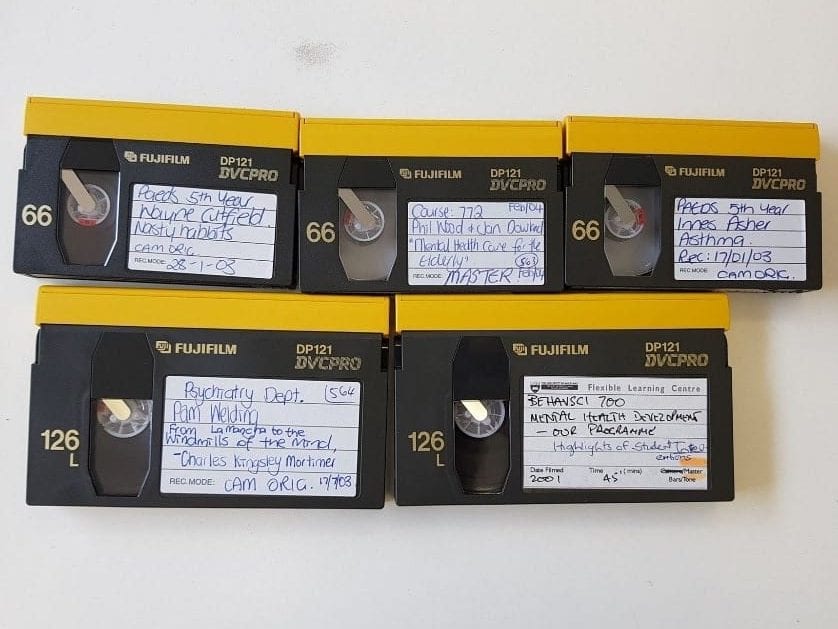
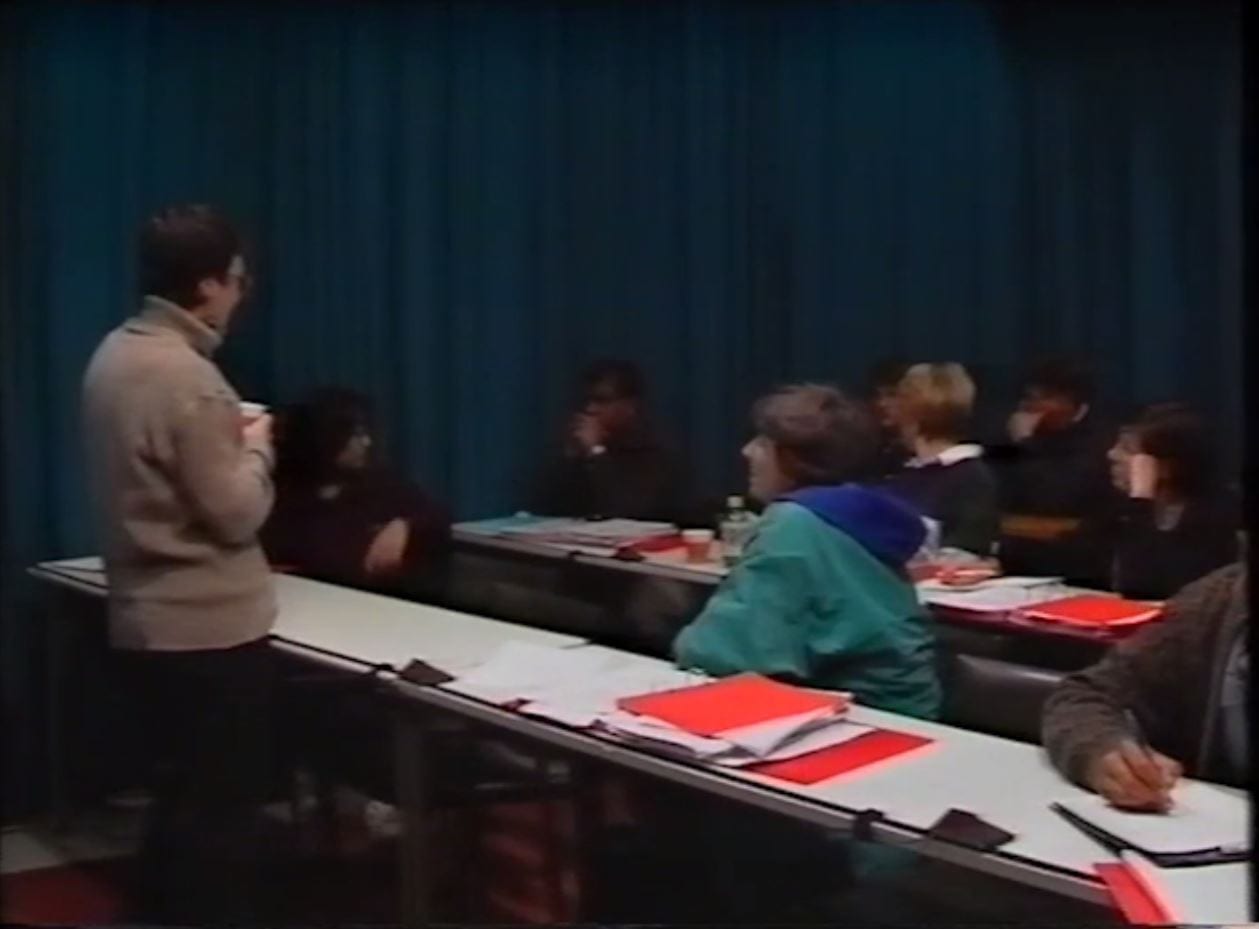
A selection of videos and DVC-Pro tapes the Goodfellow Unit co-produced with the Faculty of Medical and Health Sciences Media Unit.
Across the early-2000s, the postgraduate diplomas expanded from catering to the needs of GPs, to attracting others working in primary care including nurses and pharmacists from New Zealand and overseas. They featured workbooks, videos, CDs, and later, web-based discussion groups and web-based case studies.9
By 2012, the Goodfellow Unit delivered all courses online, with the exception of some sections on practical skills that took place in workshops.
- Interview with Jocelyn Tracey; Claire J. McLachlan-Smith and Jocelyn M. Tracey, ‘Learning by Distance for General Practitioners: Students’ Experiences of Goodfellow Unit Diplomas’, New Zealand Medical Journal vol 113, no 1110 (2000): 188. ↩
- Interview with Brian McAvoy, 2 November 2018. ↩
- Philip Barham, Goodfellow Unit, Moves Towards Self Sufficiency by 1993, November 1989, 2. ↩
- Letter from Campbell Maclaurin and Philip Barham to Colin Maiden, 3 November 1987. ↩
- Philip M. Barham, ‘Long Courses Offered from Goodfellow Unit’, New Zealand Doctor, 15 April 1993, 32. ↩
- Report on Goodfellow Unit Strategic Planning Day, 22 May 2003. ↩
- Interview with Jocelyn Tracey. ↩
- Mclachlan-Smith and Tracey, ‘Learning by Distance for General Practitioners’, 187-9. ↩
- Ross McCormick, Postgraduate Annual Report, draft, 2003. ↩
